How To Change Power Steering Belt On 1997 Geo Prizm
Locating the power steering belt
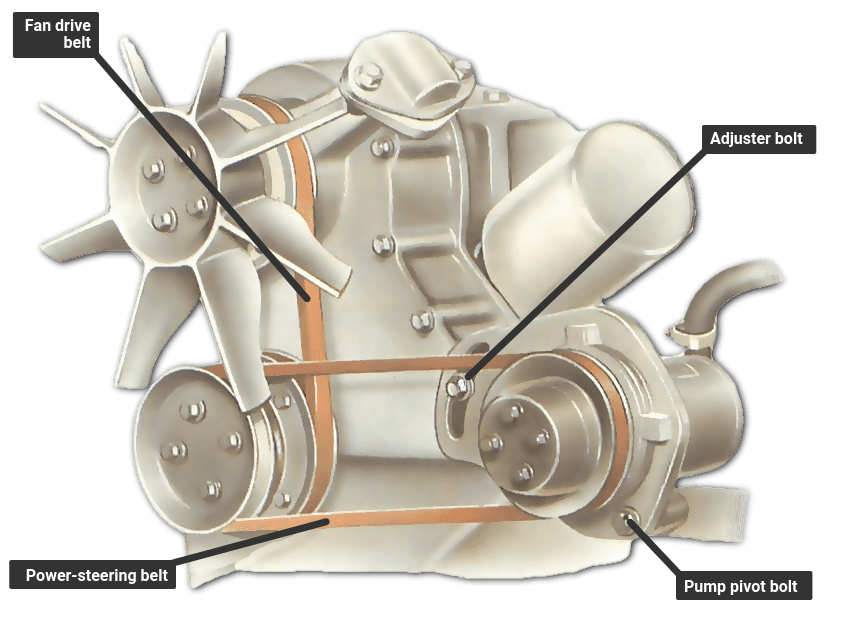
The belt that drives a power-steering hydraulic-fluid pump is usually at the front of the engine , turned by a pulley on the crankshaft .
It is generally separate from the chugalug that drives the h2o pump and alternator , just it may drive other components also equally the power-steering pump .
A slack belt tends to slip, wears fast and may fifty-fifty break; it also makes the steering feel hasty or heavy.
A slipping chugalug sometimes gives itself away by a loud screeching noise, particularly when yous start the engine from cold. The tension of the chugalug can exist adapted to end it slipping.
The pump is pivoted and then that yous tin can swing it in or out from the engine to adjust the belt tension. Moving the pump away from the engine increases the tension. As well as a pivot bolt there is an adjuster commodities that slides in a slot. Some cars also accept a slotted-link adjuster.
Inspect the belt, along with the residual of the power-steering arrangement (See Checking power-assisted steering ), at least every 6 months; at 6,000 miles or 10,000 km; at the intervals recommended in the car handbook; and, of course, at any time you suspect that information technology may be slipping.
On most cars y'all can audit the belt past looking downwards within the engine compartment. On a few, you may need to raise the front end of the car on ramps and audit from underneath.
Check for both wear and tension. If yous find that the belt is loose, accommodate it at once. If it is worn, supercede it as shortly every bit possible.
If yous buy a new belt, compare information technology with the one-time 1 to brand sure that it is the same size and an canonical make.
After adjusting or replacing the chugalug, test bulldoze the car on a quiet road to check the steering. A new chugalug will stretch slightly after about 100 miles or 150 km. Readjust information technology then.
Checking and adjusting the tension
Make sure the pulleys at each end of the chugalug are in line. Lay a direct-edge between the pulleys; both should exist parallel with it.
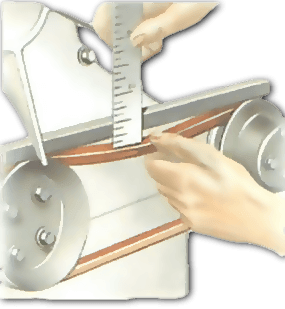
To check the tension, lay a direct-edge along the outer edge of the belt. If the chugalug goes round more than two pulleys, use the longest run of the belt.
Employ your thumbs to push the belt inward at its mid point, pushing quite difficult.
Measure how far you lot can push the chugalug from the direct-border: you lot may need a helper to do the measuring.
The car handbook should give the right amount of deflection. If not, 3/8 in. (10 mm) is most right. Compare your measurement with the deflection effigy given in the handbook, and adjust the belt accordingly.
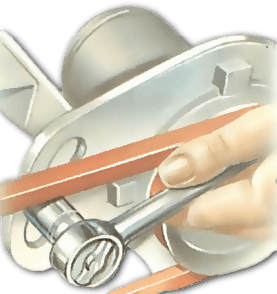
Slacken the adjuster commodities slightly. Then very slightly slacken the pivot bolt or bolts until the pump just starts to move.
If the belt was besides tight, the pump will move in towards the engine as the bolts are slackened. To get the correct tension, pull it out slightly.
If the belt was too slack, increment the tension by levering the pump outwards with a strong screwdriver or flat bar.
Lever against the bandage front end of the pump torso, just backside the bulldoze-belt caster — non confronting whatsoever other function of the body or pipework, which are easily damaged.
Rest the other finish of the lever against a sturdy part of the pump mounting bracket on the engine.
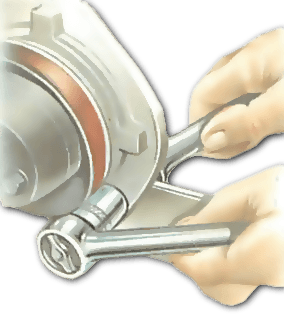
Check the belt tension while yous hold the pump in position. Mensurate the deflection from a straight edge.
When the tension is correct tighten the adjuster bolt. Bank check the tension again before tightening the pin bolt or bolts.
Re-check and readjust it as necessary until it is correct with the bolts fully tightened.
Checking chugalug wear
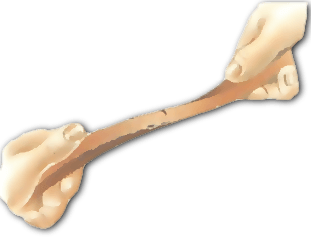
Inspect every inch of the belt on both sides. Look for nicks, cuts, fraying, scores and cracks. Flex the belt to open up up any cracks.
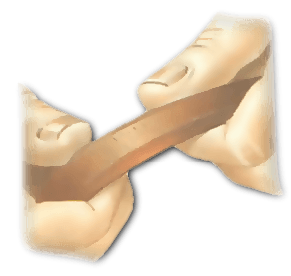
Check the lengths of the belt between the pulleys and mark them with chalk. To expose the rest of the belt for inspection, turn the engine slightly with a spanner on the crankshaft-caster nut.
Keep your hair, tie or any loose clothing clear of the turning belt.
Replacing a belt
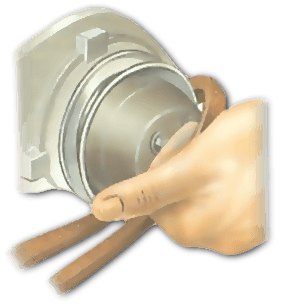
Never endeavor to lever off the old belt, you may damage the pulley.
Slacken the adjuster and pin bolts, and push the pump inward by the cast front plate until the belt is slack enough to ease off.
Do not push confronting any other part of the pump or pipework, or you may impairment information technology.
Remove the sometime belt. If it is the outermost of several belts on the engine, removal is straightforward. If not, you may need to unfasten some other belt or belts (See Checking, adjusting and refitting drive belts ) before you lot can remove it.
Fit the new belt, making sure that information technology is properly seated.
Pull the pump outwards and adjust the tension.
Refit and re-tension whatever other belts you may accept had to unfasten.
Readjust the ability-steering belt after virtually 100 miles (150 km) of driving.
Source: https://www.howacarworks.com/steering/adjusting-and-replacing-a-power-steering-drive-belt
Posted by: truesdalehimat1991.blogspot.com

0 Response to "How To Change Power Steering Belt On 1997 Geo Prizm"
Post a Comment